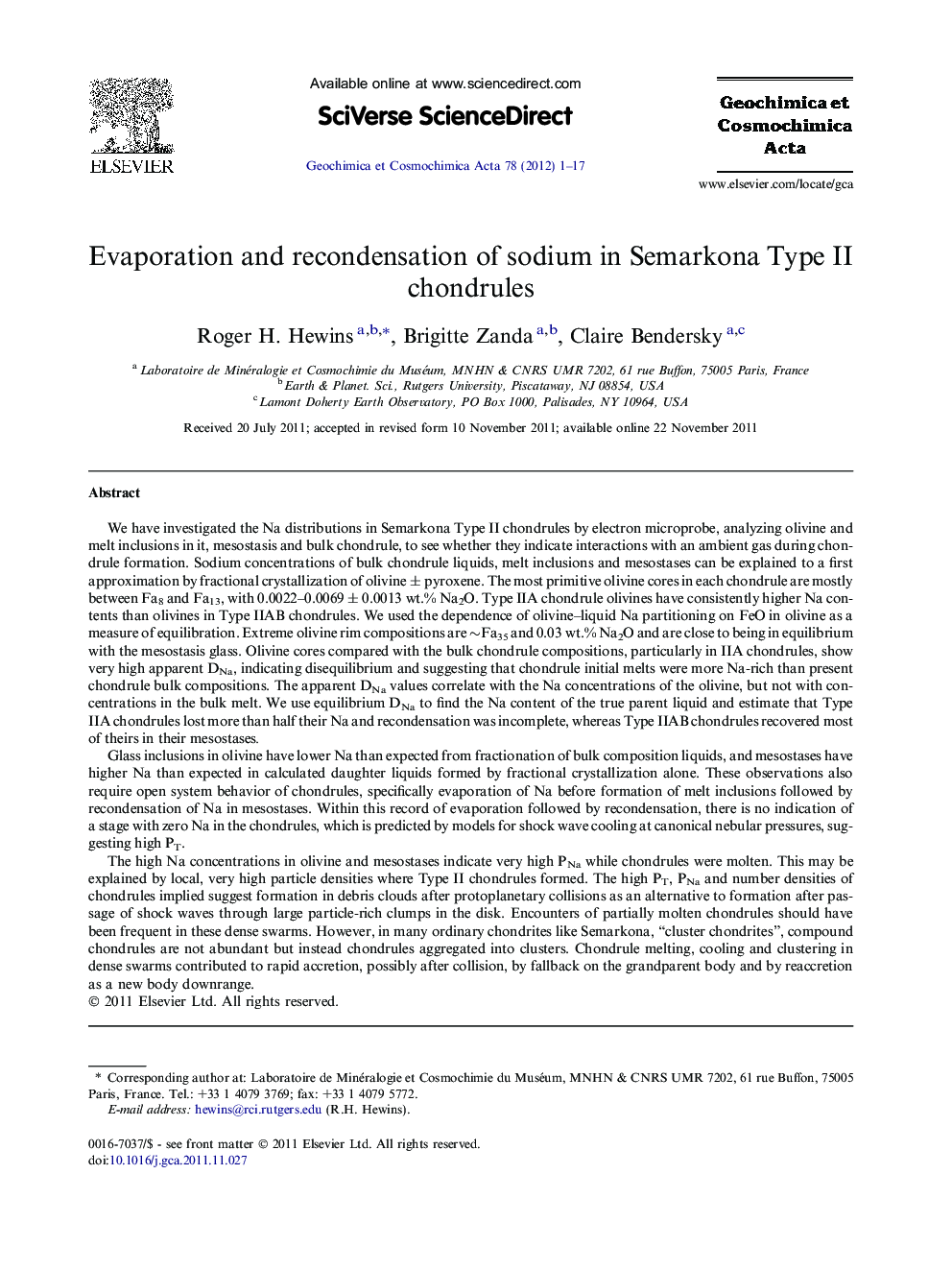| Article ID | Journal | Published Year | Pages | File Type |
|---|---|---|---|---|
| 4703049 | Geochimica et Cosmochimica Acta | 2012 | 17 Pages |
Abstract
The high Na concentrations in olivine and mesostases indicate very high PNa while chondrules were molten. This may be explained by local, very high particle densities where Type II chondrules formed. The high PT, PNa and number densities of chondrules implied suggest formation in debris clouds after protoplanetary collisions as an alternative to formation after passage of shock waves through large particle-rich clumps in the disk. Encounters of partially molten chondrules should have been frequent in these dense swarms. However, in many ordinary chondrites like Semarkona, “cluster chondrites”, compound chondrules are not abundant but instead chondrules aggregated into clusters. Chondrule melting, cooling and clustering in dense swarms contributed to rapid accretion, possibly after collision, by fallback on the grandparent body and by reaccretion as a new body downrange.
Related Topics
Physical Sciences and Engineering
Earth and Planetary Sciences
Geochemistry and Petrology
Authors
Roger H. Hewins, Brigitte Zanda, Claire Bendersky,
